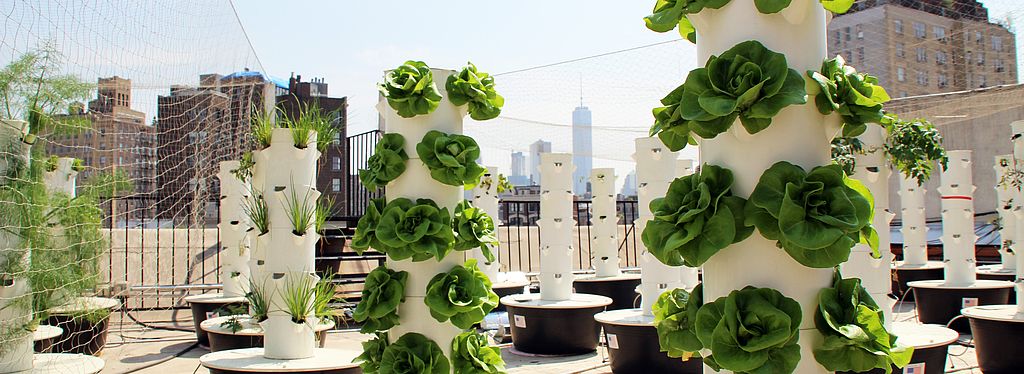The urban farming trend has taken hold in the out-of-home market. Restaurants have long since realised that imported products aren’t always the best choice. Instead, they are growing their own – and still able to treat guests to lettuce and strawberries in winter.
The Good Bank restaurant in Berlin is an urban agriculture pioneer. It operates a vertical farming concept by growing vegetables in floor-to-ceiling glass units. Growing the produce in high-tech cases uses less energy and water than would be needed in a field because light, temperature and nutrients are optimised. Vertical farming also saves time, costs and transportation. The concept is about as close to the consumer as you can get. The vertical farming units were developed by Berlin-based start-up Infarm. Celebrity chefs Tim Raue and Meir Adoni also have these high-tech cases in their restaurants.
Karin Tischer, owner of the consultancy firm food & more, is a trend expert who knows exactly why urban farming is such a big trend: “We live in a globalised world where the obscurity of sources and climate change have triggered a powerful urge among consumers to return to their roots and be more at harmony with nature. This is why the urban farming trend has taken on. It doesn’t matter how little space you have – you can grow things in gardens, or on balconies and roofs. We’re seeing a lot more small-scale vertical farming greenhouses and vertical farming units in restaurants. Urban farming reflects the spirit of the times, symbolises freshness, sustainability and authenticity, and makes people feel good about eating regional products. Restaurants can benefit from incorporating urban farming in their concepts because an increasing number of guests choose their eatery on the basis of ‘green’ criteria.
